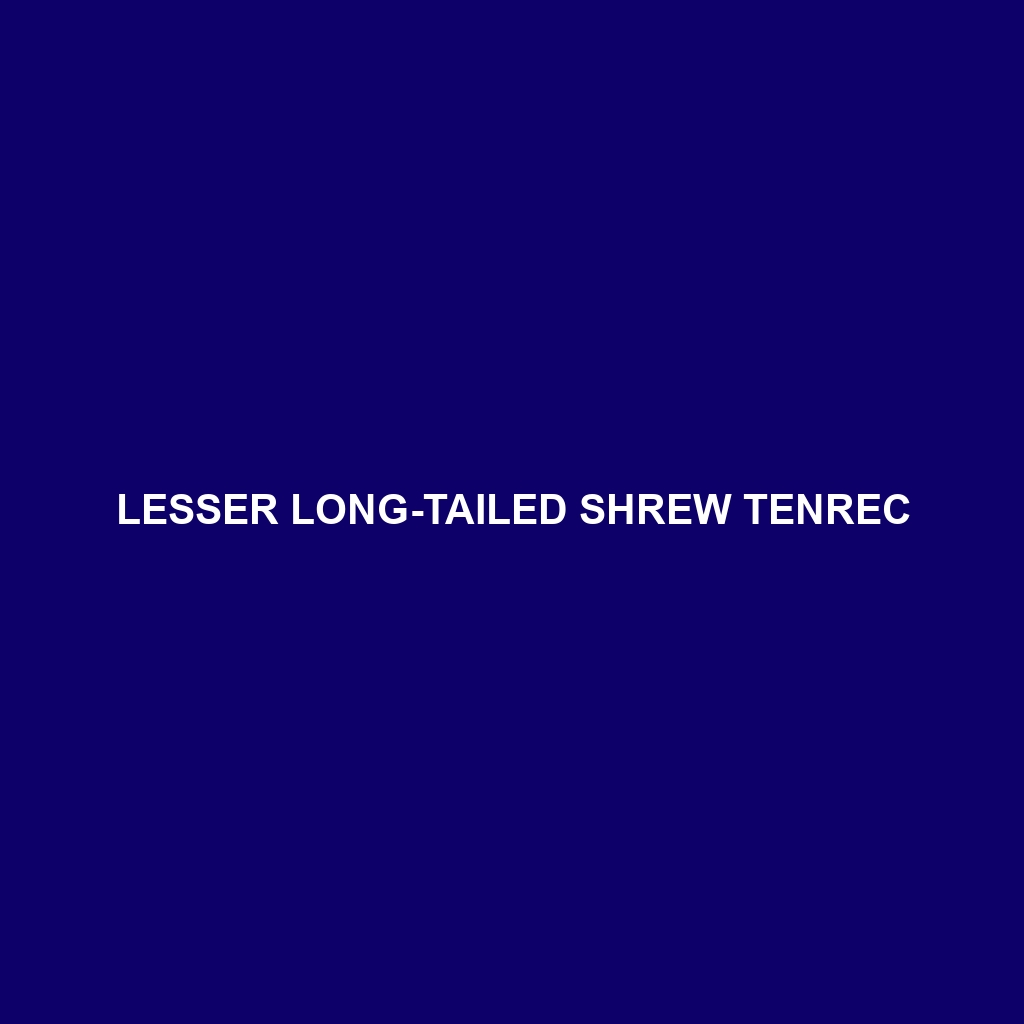Lesser Long-tailed Shrew Tenrec (Microgale longicaudata)
The Lesser Long-tailed Shrew Tenrec (Microgale longicaudata) is a small, elusive mammal endemic to Madagascar. Known for its remarkably long tail, this tenrec species is an intriguing subject for both researchers and nature enthusiasts. Despite its name, it shares more evolutionary traits with tenrecs than shrews. It inhabits the rainforests of Madagascar, playing a unique role in its ecosystem.
Physical Characteristics:
Size: The Lesser Long-tailed Shrew Tenrec is a small mammal, typically measuring around 10-12 cm (4-5 inches) in body length, with its tail often as long as or longer than its body, reaching lengths of up to 15 cm (6 inches).
Coloration: Its fur is generally dark brown to black, providing excellent camouflage within the forest floor. The belly fur is usually lighter, ranging from a paler brown to grayish tones.
Special Features: The most striking feature is its long, slender tail which is not only a distinguishing characteristic but also aids in balance and maneuverability within its complex habitat. It has a pointed snout and small eyes, indicative of its nocturnal and fossorial (digging) lifestyle.
Behaviors:
Social Interactions: The Lesser Long-tailed Shrew Tenrec is primarily solitary, coming together only for breeding. They communicate through a series of high-pitched squeaks and ultrasonic sounds that help in navigation and interaction within their environment.
Feeding Habits: This species is insectivorous, feeding mainly on insects, worms, and other small invertebrates. It uses its keen sense of smell and touch to hunt, often foraging through leaf litter and underbrush.
Ecological Role: As a predator of invertebrates, it helps control insect populations, contributing to the ecological balance of its habitat. Its foraging activity also aids in soil aeration.
Habitats:
Location: Endemic to Madagascar, the Lesser Long-tailed Shrew Tenrec is primarily found in the island’s dense, moist rainforests.
Environment: They prefer the thick understory of tropical forests, where they can easily navigate and find cover. These forests provide abundant food sources and shelter against predators.
Adaptations:
Nocturnal Lifestyle: Its nocturnal habits reduce competition for food and help avoid many diurnal predators.
Fossorial Adaptations: With strong limbs and claws, it is well-adapted to digging and foraging through the forest floor.
Sensory Adaptations: Enhanced olfactory and tactile senses compensate for its poor vision, crucial for hunting in the dark and complex forest environment.
Conservation Status:
Threats: Habitat destruction due to deforestation and agricultural expansion poses significant risks. Additionally, climate change and introduced species could further threaten their populations.
Status: The conservation status of the Lesser Long-tailed Shrew Tenrec has not been extensively studied, but it is likely affected by the habitat pressures mentioned above. Conservation efforts need to focus on habitat preservation and further research into their population dynamics.
Fun Facts:
The Lesser Long-tailed Shrew Tenrec is part of a unique family of mammals, the Tenrecidae, which exhibits an incredible diversity in form and function, almost like Madagascar’s own version of a biological experiment.
Unlike many mammals, tenrecs do not have scrotal testes; the testes of male tenrecs remain inside their body.
They have a low body temperature compared to many other mammals and can enter torpor, allowing them to conserve energy during periods of food scarcity.
This detailed description of the Lesser Long-tailed Shrew Tenrec offers a glimpse into the remarkable characteristics and lifestyle of this fascinating species. Through increased awareness and conservation efforts, we can help ensure the survival of this unique mammal and its habitat.
